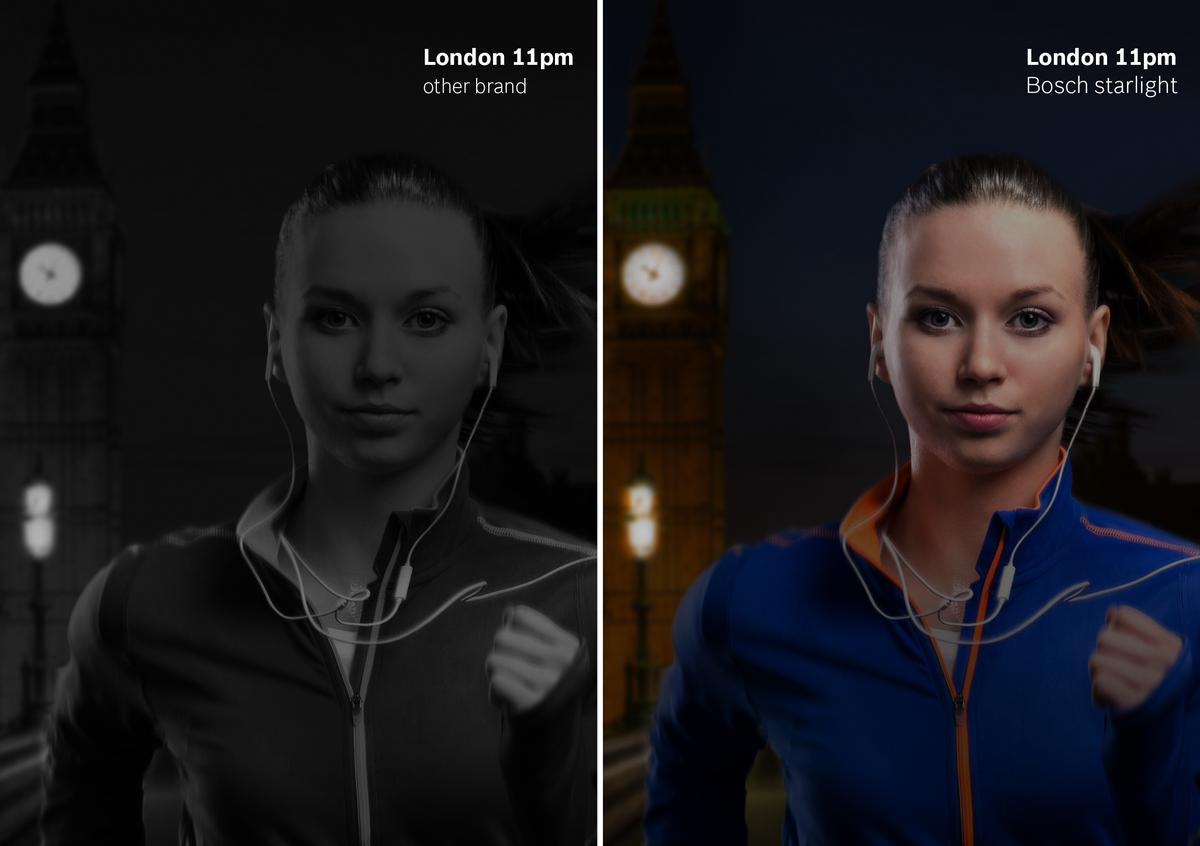Bosch starlight cameras deliver the highest quality of relevant video surveillance, even in extremely low light conditions. From October, the starlight portfolio will be even further enhanced with improved light sensitivity, superb front and backlight compensation; higher frames rates as well as a wider choice of resolutions and form factors. Another compelling enrichment is that all Bosch IP 6000, 7000 and 8000 starlight cameras will feature Bosch video analytics at the edge as standard, instead of an optional feature requiring no additional investment or license fees from the customer.
Bosch feels that the offering of video analytics at the edge as standard is now a necessity to cater to the ever-increasing demand for details and the proliferation of cameras. Bosch video analytics adds sense and structure to video data already at the point of capture (at the edge), enabling users to effortlessly search through large amounts of video data and to pinpoint the information that matters most to them. In this way users can take appropriate action faster, easier and more efficiently. It also enables them to reduce network strain and storage requirements by streaming only the data needed.
The complete IP starlight camera portfolio from Bosch offers a wider selection of resolutions (720p, 1080p, 5 megapixel) and form factors including fixed box, fixed dome or moving dome cameras; as well as extremely rugged moving cameras for when conditions get tough. The starlight portfolio also offers higher dynamic ranges of up to 120 dB for perfect exposure in all lighting conditions regardless of front and backlight, as well as frame rates of up to 60 frames per second to easily capture fast moving objects.
In addition, the latest sensor technology, combined with sophisticated noise suppression, results in a light sensitivity of 0.0069 lux in color and 0.0008 lux in monochrome for the 1080p models. This enables starlight cameras to produce full color images in the dark beyond the point where other cameras have switched to monochrome. Where other cameras fail to show any image at all, starlight cameras are still capable of delivering detailed monochrome images.
Bosch’s video analytics at the edge enables starlight cameras to interpret data and to decide what and when to stream based on configurable triggers minimizing bandwidth requirements if needed. The end results are relevant alerts and key statistics which enhance the accuracy of the video surveillance system, providing relevant data for numerous security and non-security applications and substantially reducing the margin of error that comes with time consuming and labor intensive 24/7 human surveillance.
A full suite of Essential Video Analytics will be provided as standard without additional license fees on the DINION IP starlight 6000 fixed box and FLEXIDOME IP starlight 6000 fixed dome cameras at competitive price points. All IP 7000 and IP 8000 starlight cameras will come equipped with the state-of –the-art Intelligent Video Analytics from Bosch; a full suite of robust video analytics algorithms offering highest accuracy for the ultimate in video analytics. Like with Essential Video Analytics, Bosch Intelligent Video Analytics requires no additional investment or license fees from the customer.
Essential Video Analytics offers 15 different video analytics algorithms that can be used for advanced intrusion detection and enforcing health and safety regulations. It also possesses business analytics capabilities, such as people counting and crowd density information for retail environments.
Intelligent Video Analytics is specifically designed for the most demanding environments. It has the added capacity to deliver the highest level of accuracy for mission critical applications such as perimeter protection for airports and critical infrastructures, ship tracking and traffic monitoring.
Intelligent Video Analytics offers 17 different video analytics algorithms and can do everything that Essential Video Analytics does. What makes Intelligent Video Analytics stand out is its ability to differentiate between genuine security events and known false triggers such as challenging environments where snow, wind, rain, water reflections and distance could make images even more difficult to interpret. Thus minimizing costly false positives and enabling users to focus on what is relevant to them.
